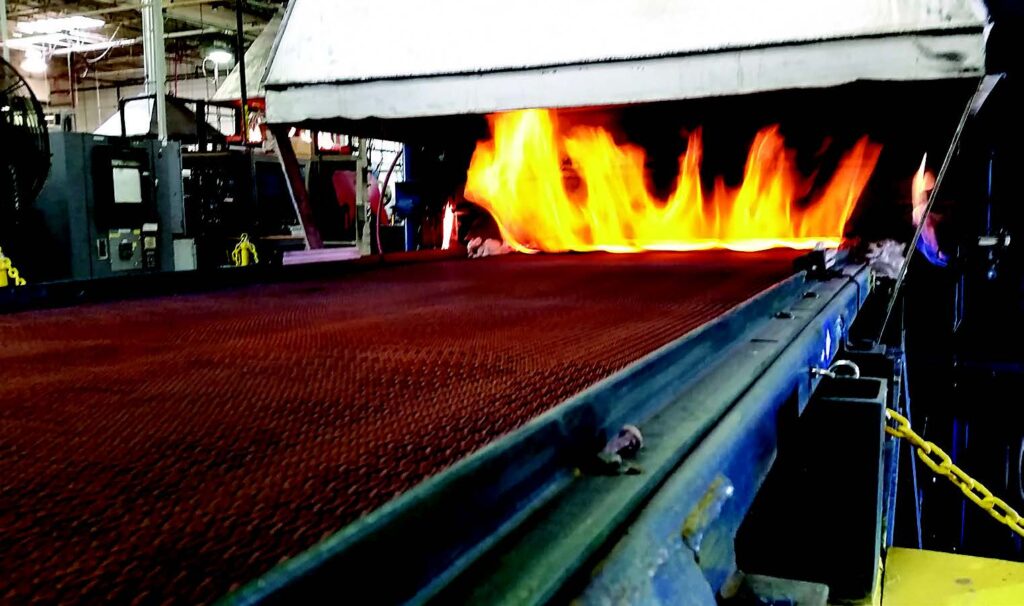Stronger “Shaped” Wire Belt Stands Up to the Rigors of Heat Treating
by: Del Williams for Lumsden Belting Corp.
Whether for automotive, aerospace or heavy equipment, manufacturers using heat treatment, which can reach temperatures up to 2400°F and vary from a few seconds to 60+ hours, need conveyor belting that can withstand the rigors of the process. However, traditional round balance weave wire belting has changed little in 100 years and often requires annual replacement, causing costly production downtime.
Heat treating is essential to improve the properties, performance and durability of metals such as steel, iron, aluminum alloys, copper, nickel, magnesium and titanium. This can involve conveying to hardening, brazing and soldering as well as to sintering furnaces, carburizing furnaces, atmosphere tempering furnaces and heat processing in annealing and quenching furnaces. Parts treated can range from bearings, gears, axles, fasteners, camshafts and crankshafts to saws, axes and cutting tools.
Heat treat grade balance weave belts—made of temperature-resistant stainless steel or other heat resistant alloys, suitable to be run on a conveyor with friction drive—can cost thousands of dollars, depending on the dimensions and quality. So even though wear and premature replacement seems inevitable, such wire belting should not be considered a low-cost consumable.

